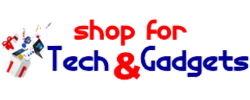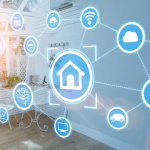Building a state-of-the-art smart home is now more affordable and accessible than ever. While previous roundups highlighted the best individual smart home components, this guide focuses on the top hubs that connect all these devices. These hubs serve as the backbone of a smart home, linking different systems for seamless control.
Smart home systems can generally be divided into two categories: those prioritizing convenience and those focused on home security. While many systems can incorporate both aspects, it’s essential to determine whether convenience or security is the primary goal before making a choice.
The Best Smart Home Systems
1. Samsung SmartThings Station
A versatile, Matter-certified smart home hub with a sleek design and the added convenience of wireless phone charging. It simplifies managing multiple smart devices and ensures broad compatibility with Matter-certified products. However, it lacks Z-Wave support, and setup issues may arise, making reliable tech support crucial.
Pros
- Stylish design with bonus features like wireless phone charging
- Supports Matter, offering broad compatibility
Cons
- Limited Samsung-specific features
- No longer supports Z-Wave, battery backup, or cellular backup
- Setup can be buggy, and tech support is unresponsive
Why it’s recommended:
The Samsung SmartThings Station has evolved into a powerful Matter-certified hub, compatible with virtually any Matter-certified device. Although it no longer supports Z-Wave, it is easy to use and perfect for creating a Matter-compatible smart home. It also includes a charging pad for smartphones and other devices.
Who should choose it:
Ideal for those looking to build a Matter-compatible smart home. It’s a powerful standalone hub that works seamlessly with various devices.
2. Aeotec Smart Home Hub
A flexible smart home hub supporting Zigbee, Z-Wave, Wi-Fi, and Bluetooth protocols. It connects effortlessly to popular ecosystems like Amazon Echo and Google Home. Perfect for DIY enthusiasts who value compatibility across a wide range of devices, though it doesn’t support Apple HomeKit or Matter.
Pros
- Supports Zigbee, Z-Wave, Wi-Fi, and Bluetooth
- User-friendly software
- Connects via Ethernet or Wi-Fi
Cons
- Not compatible with Apple HomeKit
- Not Matter-certified
- Requires broadband connection
Why it’s recommended:
The Aeotec Smart Home Hub supports various smart home protocols, making it an excellent choice for those who want flexibility in adding devices. It works with popular smart home systems, including Amazon Echo, Google Home, and more.
Who should choose it:
It is best for those seeking the freedom to add virtually any smart product, regardless of the protocol. It is ideal for users who want a DIY setup without limitations.
3. Ikea Dirigera
An affordable and beginner-friendly smart home hub designed to integrate with Ikea’s devices and mainstream ecosystems like Alexa, Google Home, and Apple Home. With future Matter compatibility in the pipeline, it offers potential for expansion despite its current limitations.
Pros
- Inexpensive and easy to use
- Supports Alexa, Google Home, and Apple Home
- Matter support expected
Cons
- Limited to Ikea’s products for now
- Must be hardwired to the router
- The feature set is still limited
Why it’s recommended:
Ikea Dirigera offers an affordable and beginner-friendly entry into smart homes. While currently limited to Ikea’s smart home products, it’s expected to support third-party devices once its Matter compatibility is rolled out.
Who should choose it:
It is perfect for those new to smart homes who want a simple, reliable system with the potential for expansion. It is also ideal for users who prefer easy setups and value affordability.
Key Considerations When Shopping for a DIY Smart Home System
- Device Support: Some hubs support only their devices, while others work with third-party products. Consider existing devices at home and whether the new hub will integrate.
- IFTTT Support: Look for systems that support IFTTT (If This Then That) for added customization and device compatibility.
- Wired vs. Wireless Connection: Many hubs require a wired connection to the router, which can limit placement options. Wireless hubs offer more flexibility but may have a limited range.
- Sensor Range: Check the range of your hub’s sensors, especially for large homes. Different protocols (Bluetooth, Zigbee, Wi-Fi, etc.) have varying ranges, which could impact performance.
- Battery Backup: Consider a hub with battery backup or invest in an uninterruptible power supply (UPS) for continuous operation during power outages.
- Mobile App Usability: The hub’s mobile app should be intuitive and feature-rich, as it will be the primary interface for managing your smart home.
- Service Plan Costs: Some systems require subscription plans for full functionality. Ensure the service plan’s cost aligns with the system’s features and your needs.
Other Notable Smart Home Systems
- Aqara Hub E1: A compact, USB-powered hub controls Aqara Zigbee devices.
- Aqara Hub M2: Focuses on convenience and ease of use but limits support to Aqara’s products.
- Homey Bridge: A multi-protocol hub supporting Wi-Fi, Zigbee, Z-Wave, and Bluetooth, offering basic functionality with limited device support without a subscription.
- Hubitat Elevation (Model C7): This powerful hub is favored by enthusiasts. It offers offline operation but requires advanced knowledge for setup.
- SwitchBot Hub 2: Primarily a gateway for SwitchBot products, but also functions as a Matter bridge.
By considering these options and factors, finding the right smart home system that matches specific needs, whether focusing on convenience, security, or overall flexibility, is possible.
Smart Home Devices to Consider in 2025
1. Smart Thermostats: Advanced Temperature Control
Smart thermostats are evolving, providing more intuitive and energy-efficient features that enhance home comfort. Devices like the Google Nest Thermostat and Ecobee SmartThermostat use artificial intelligence to help save on energy bills and adapt to user schedules, optimizing temperature settings automatically. Integration with voice assistants further improves usability.
Key Features in 2025
- Faster adapting AI learning algorithms
- Integration with lighting, smart curtains, and other home systems
- Advanced sensors for occupancy and air quality detection
- Support for renewable energy sources, such as solar energy
2. Smart Security Cameras: Enhanced Surveillance
In 2025, security cameras will offer advanced protection with improved video quality, motion detection, and innovative features. Products like the Arlo Ultra 2 and Ring Spotlight Cam allow remote monitoring and real-time alerts, including human detection, facial recognition, and AI threat analysis.
Key Features in 2025
- AI motion detection that differentiates between humans, animals, and vehicles
- 360-degree pan and tilt coverage for comprehensive surveillance
- Advanced facial recognition for tracking visitors
- Seamless integration with doorbell cameras
3. Smart Lighting: Advanced Control and Automation
Smart lighting continues to develop, providing sophisticated control through apps and voice commands. Brands like Philips Hue and LIFX enable users to adjust lighting settings based on the time of day or mood, fully integrating into home automation systems.
Key Features in 2025
- AI-driven adaptive lighting based on user preferences and natural light
- Integration with wellness apps for optimizing sleep patterns
- Voice and motion-activated controls
- Integration with home theater systems for synchronized lighting
4. Smart Locks: Enhanced Security with Convenience
Smart locks provide keyless entry and improved security. Devices like the August Smart Lock and Schlage Encode allow for remote access control, guest access, and integration with other home systems for seamless security management.
Key Features in 2025
- Biometric authentication methods (e.g., facial recognition, fingerprint scanning)
- Integration with security cameras for automatic locking/unlocking based on presence
- Advanced guest access management
- Improved battery life and backup systems
5. Smart Speakers and Voice Assistants: The Home Command Center
Smart speakers and voice assistants are central to home automation, enabling control of various devices through voice commands. The Amazon Echo and Google Nest Audio will provide even greater integration, allowing users to control everything from thermostats to security cameras.
Key Features in 2025
- Advanced natural language processing for handling more complex commands
- Integration with a broader range of home appliances
- Personalized voice profiles for multi-user households
- Centralized control for all smart devices
6. Smart Home Hubs: Centralized Control
Smart home hubs are the central system connecting all devices, ensuring compatibility across different ecosystems. Devices like the Samsung SmartThings Hub and Amazon Echo Hub will enhance connectivity and communication between devices, offering seamless control through apps and voice commands.
Key Features in 2025
- Integration with a larger variety of third-party devices
- 5G and improved Wi-Fi support for faster and more reliable communication
- AI-driven automation for smarter decision-making
- Voice and app control for easy interaction with all devices
7. Smart Plugs and Power Strips: Powering Home Automation
Smart plugs and power strips make incorporating non-smart appliances into a smart home easy. Devices like the TP-Link Kasa Smart Plug and Wemo Mini Smart Plug allow for remote control of appliances, enhancing energy efficiency and automation.
Key Features in 2025
- Energy monitoring and usage tracking for improved efficiency
- AI-driven automation based on user routines
- Voice and app-based control
- Enhanced safety features, including automatic shut-off
8. Smart Kitchen Appliances: Innovation in the Heart of the Home
Smart kitchen appliances are becoming more advanced, offering better efficiency and convenience. Devices like the Samsung Smart Refrigerator, Instant Pot Smart Cooker, and June Oven provide remote control, recipe suggestions, and integration with nutrition apps.
Key Features in 2025
- AI-driven recipe customization based on dietary preferences
- Integration with grocery delivery services for automatic restocking
- Advanced inventory tracking and expiration date reminders
- Improved energy efficiency and waste reduction
9. Smart Health and Fitness Devices: Improving Wellness at Home
Smart health devices are becoming integral to smart home systems, enabling users to track fitness metrics and foster a healthier living environment. Devices like the Fitbit Charge and Withings Body+ scale monitor essential health data, syncing with home systems like thermostats to adjust living conditions for improved well-being.
Key Features in 2025
- Advanced biometric tracking, including stress levels and hydration
- Integration with AI-powered health apps for customized fitness plans
- Air quality monitoring and analysis to promote a healthier home environment
Benefits of Smart Home Devices
- Energy Efficiency: Thermostats, lighting, and appliances optimize energy use, helping reduce consumption and lower utility bills.
- Enhanced Security: Cameras, locks, and sensors offer real-time monitoring, boosting home security.
- Increased Comfort: Automation tailored to individual preferences creates a more comfortable living space.
- Accessibility: Voice control, apps, and assistants make home management easier, particularly for those with mobility challenges.
- Home Automation: A fully integrated system seamlessly controls everything from lighting and temperature to entertainment and security with minimal effort.
Transforming Homes With Smart Technology in 2025
In 2025, the smart home industry will offer various devices, from advanced thermostats and security cameras to energy-efficient appliances and health devices. With options focused on convenience, security, and automation, the right combination can transform any home into a secure, efficient, personalized space. Advancements in AI and cross-platform integration promise to simplify everyday life, making 2025 an exciting year for smart home technology.




